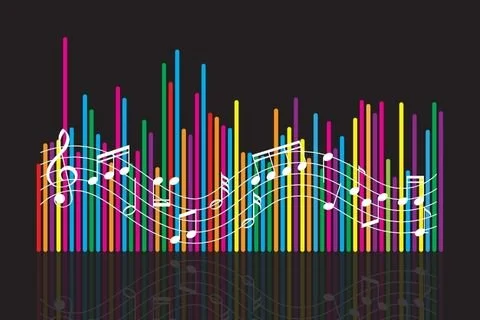Why Amateur Singers Should Master Sight-Reading
Beyond getting the notes right
Sight-reading is often presented as a technical hurdle—another skill to “check off.” But for amateur singers, it’s far more than that. Learning to read a choral score with confidence is a gateway to deeper joy, richer community, and more meaningful music-making. Think of sight-reading as musical literacy: it lets you participate fully in the conversation, not just repeat what someone else has said.
Below is a short rationale that links the familiar “tips & tricks” (scan the score, clap rhythms first, read in melodic shapes, use landmarks, look ahead, honor dynamics, listen, and recover gracefully) to the larger why that makes the effort worthwhile.
1) Personal Growth and Fulfillment
What it builds: confidence, calm, and genuine enjoyment.
Pre-rehearsal prep & quick score scans turn anxiety into orientation. When you know the key, time, form, and road signs (repeats, codas), the unknown becomes navigable. That psychological shift—from threat to map—creates calm and makes room for joy.
Clapping rhythms first provides instant wins. Feeling the pulse and subdivisions in your body lowers the “cognitive load” before pitch enters, so success arrives sooner. Small, frequent success is motivational fuel.
Reading in shapes and intervals (up a step, down a third) rewards pattern recognition. Each pattern you conquer boosts self-efficacy: I can figure this out. That sense of competence is deeply satisfying—and habit-forming.
Recovering gracefully (don’t stop; rejoin the measure) nurtures resilience. You practice bouncing back in real time, which is a transferable life skill and keeps the experience positive.
Result: You leave rehearsal feeling capable rather than lucky. Enjoyment grows not from perfection, but from control and progress.
2) Community and Collaboration
What it builds: trust, efficiency, and generosity within the ensemble.
Rhythmic reliability is an act of service. Even if a pitch is shaky, staying in time supports everyone around you and keeps the rehearsal moving. Rhythm-first reading is ensemble hospitality.
Looking a beat or two ahead aligns you with the conductor’s intent and prevents pile-ups at page turns. When many singers do this, the choir rehearses faster and makes more music in less time.
Dynamics and articulation aren’t decorations; they’re agreements. Reading them well means you blend—you shape phrases together, breathe together, tell a unified story. That shared sensitivity builds trust.
Active listening (to your section and across the choir) turns sight-reading into dialogue: you fine-tune pitch and color in response to others, not in isolation. The group becomes more cohesive because each member is more aware.
Result: Independent readers are easier neighbors in the choral “neighborhood.” The choir spends less time decoding and more time expressing—morale rises alongside musical quality.
3) Musical Understanding and Appreciation
What it builds: insight into how music works.
Key signatures and tonal “home base” (Do) place pitches in context. Suddenly, intervals aren’t random jumps; they’re meaningful relationships within a key. This deepens your sense of harmony and intonation.
Melodic contour reading connects the dots: you feel line and direction rather than chasing individual notes. Phrases become sentences with grammar and punctuation.
Attending to form and road-map markings (repeats, codas, contrasting sections) reveals architecture. When you know where you are in the piece, you also know why this phrase needs that color or energy.
Result: Music moves from sounding “pretty” to being understandable and therefore more moving. Appreciation grows with comprehension.
4) Empowerment and Independence
What it builds: autonomy, access, and sustained participation.
Landmark notes and reference intervals let you launch confidently without a crutch. You rely less on plunked parts or recordings and more on your ear and the page.
Consistent habits (scan, rhythm, contour, dynamics) shorten the time from first look to first music. That efficiency means you can say “yes” to more ensembles, projects, and repertoire.
Graceful recovery skills transform mistakes from derailments into brief detours. You become a singer who keeps the ensemble moving—someone directors and colleagues count on.
Result: Independence widens your world: more invitations, more repertoire, more meaningful musical moments.
5) The “Why” Behind the “How”
Each practical technique carries a philosophical payoff:
Scan the score → Stewardship of shared time. You prepare so the group can create.
Clap the rhythm first → Reliability. You become a rhythmic anchor others can trust.
Read by contour and intervals → Literacy, not mimicry. You contribute ideas, not just echoes.
Use landmarks & look ahead → Foresight. You anticipate, adapt, and support the flow.
Honor dynamics & articulation → Empathy. You shape your sound for the sake of the whole.
Listen actively → Conversation. You make space for others and refine your own voice.
Recover without stopping → Resilience. You choose momentum and music over ego.
A Closing Invitation—for Singers and Leaders
For singers: treat sight-reading practice like daily stretching—brief, consistent, and cumulative. Ten mindful minutes (rhythm drills, interval patterns, quick scans of unfamiliar songs, hymns, or anthems) will change your musical life.
For directors and teachers: frame sight-reading as belonging through literacy. Build micro-drills into warm-ups, celebrate rhythmic accuracy as highly as pitch, and normalize quick recovery. You aren’t merely training technicians; you’re forming confident, collaborative artists.
In short: mastering sight-reading doesn’t just help you sing the right notes—it helps you become the kind of musician every choir longs to have: attentive, agile, generous, and brave. And that is why it matters.



